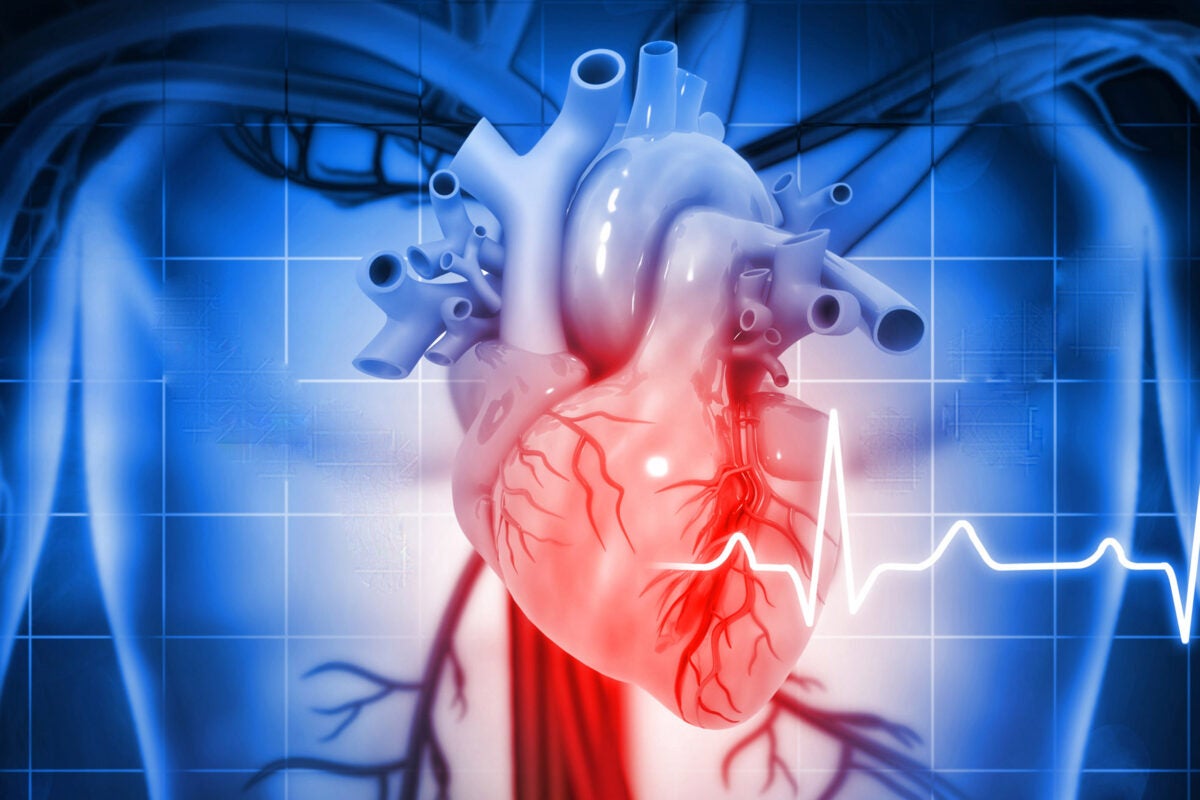Stephanie Mitchell/Harvard Staff Photographer
Health
Should we be panicked about bird flu? William Hanage says not yet.
But he warns that there is real cause for concern, CDC should take much closer look
The nation’s first human death due to the bird flu occurred this month, the latest development in a global outbreak that, while mostly limited to birds and mammals such as minks, polar bears, cows, and domestic cats — has also sickened 67 Americans and has public health officials watching closely for signs that a human pandemic is in the offing.
The Gazette spoke with Harvard epidemiologist William Hanage, associate professor of epidemiology at the Harvard T.H. Chan School of Public Health and associate director of the Center for Communicable Disease Dynamics. Hanage offered his assessment of where things are right now and what public health officials are monitoring. This interview was edited for length and clarity.
There’s been more news of bird flu lately, including mounting poultry outbreaks and the first report of the death of a person in the U.S. The CDC’s assessment is that risk remains low. What’s your take? Is it time for the public to sit up and take notice?
I think it’s past time, but the recent death in Louisiana is not, in and of itself, reason to be more concerned. Bird flu deaths are rare events, but sooner or later we would expect one to occur.
It happened to a person who was relatively elderly and is reported to have had other underlying conditions, which is not to dismiss it in any way. They contracted it from birds in their backyard — I believe they kept chickens who likely were infected by wild birds.
Although this shows that we should be concerned about bird flu, it does not mean that there is necessarily a greater risk of it starting to transmit among humans, which would be really worrying.
“We will certainly see another flu pandemic. That’s not an ‘if’; it’s a ‘when.’”
One common characteristic in the outbreak in California dairy workers and the death in Louisiana seems to be “close contact.” Why is that important?
These viruses are not particularly good at infecting humans. It’s thought that’s because they don’t stick to the receptors in the upper part of the respiratory tract. Instead, they stick to receptors buried in the lower lung or in other tissues, like the conjunctiva in the eye.
That is one of the reasons we think we have been seeing conjunctivitis as a feature of infections in dairy workers. It’s easy to see how somebody exposed to infected milk — there’s a huge amount of virus in that milk — could splash a droplet into their eye or inadvertently touch their face, and the virus could gain access to them that way.
But for enough virus to get into the lower lung where these receptors are takes quite a lot of close contact.
California has recalled some raw milk products in which the virus has been detected. Does the pasteurization process kill the virus?
The pasteurization process renders the virus unviable. It can be detected in rare cases with very sensitive methods. But there’s a big difference between that and it being able to infect someone.
How concerning are reports that there may be many asymptomatic or mild cases among humans?
Mild cases, if they lead to transmission, are really important. Even if severe outcomes are rare, if a lot of people get infected then the severe cases will pile up.
The big question is whether infected farmworkers have transmitted to other people. If so, it hasn’t happened a lot because we would have detected more symptomatic cases. But blood tests could show if contacts of known cases show signs of having been exposed to the virus.
Hasn’t the CDC looked at that?
The CDC has done studies of farmworkers for evidence of having been exposed, but not of their contacts. That’s crucial.
“A key thing that we’ve not seen in the case of H5N1 and cattle are superspreading events.”
What worries you most?
We will certainly see another flu pandemic. That’s not an “if”; it’s a “when.” We cannot say how severe it will be, but we can say that it has the potential to be bad. We don’t talk enough about how we would detect it early and what we would do when it happens.
It won’t necessarily come from H5N1 in cattle. Most people I know think that probability is pretty low. But they also think that the probability is increased with more exposures among humans and opportunities for the virus to adapt to mammalian cells.
One serious potential concern is H5N1 outbreaks in swine, because if a pig gets infected with two different flu viruses, what comes out can be a mixture of the two, capable of transmitting among humans.
Are we doing enough with bird flu right now?
No. I would like to see more thorough investigation of the potential for transmission. I would like to see more careful surveillance of the adapting virus. I would like to understand more about the nature of the infections in the people we’ve identified them in.
The infection of the person who passed in Louisiana was reported to have mutations that indicated it was adapting to humans. Those mutations were not present in the birds from which the infection was obtained, suggesting the virus adapted in that person.
If the infection was relatively long-term, it recalls variants of COVID that almost certainly result from long-term infections in cases among people with difficulty mounting an effective immune response. Long-term infections with bird flu might be capable of doing something similar.
When they say, as in the Louisiana case, that there are “concerning” variations better adapted to infect humans, are they talking about respiratory spread?
They’re not talking about transmission. They’re talking about an adaptation to replicate effectively in human cells once the infection has started.
One of the tensions in the evolution of infectious diseases is that adapting to survive well inside you is not the same as adapting well to transmit to another person. Often there’s a tradeoff.
If you have enough cases, though, the chances of a mutation that eases transmission don’t need to be very high for the virus to spread. The difference between H5N1 and COVID is that there were literally millions of infections in COVID, while there have been very few human infections with H5N1.
That’s an important point. It takes a lot of tries for a mutation to hit on something that makes it dangerous, from a pandemic standpoint, but that’s not what we’re seeing.
Agreed. But what we are seeing is a generalist virus, and that’s a concern. Generalists that are capable of causing short transmission chains in a new species — like cattle or humans — have the opportunity to adapt to infect that species more effectively. That’s what we think happened at the very early stage of COVID. It probably caused a number of short transmission chains — superspreading events — and gained the ability to transmit effectively.
A key thing that we’ve not seen in the case of H5N1 and cattle are superspreading events. The transmission events to humans have been rare and required close contact. A superspreading event can, even if rare, lead to a lot of descending transmission chains, which take a while to burn out and provide opportunities for adaptation. Most introductions go extinct. But the ones that don’t eventually make up for it.
You mentioned there will be another flu pandemic. Have any of the previous pandemics been H5N1?
None, but what is concerning is that when virologists look at H5N1 and at the disease it causes in people unlucky enough to get sick, it awakens unpleasant thoughts of H1N1 in 1918-1919.
You said the public should sit up and take notice of bird flu. What does that mean?
If you come across a dead bird or if you keep chickens and they die, don’t touch them. And if you consume raw milk, be conscious that there is a risk in doing so.
Early on in COVID, I said, “Don’t panic; do prepare.” There is no reason at present to panic about H5N1. But there is reason to be aware of the outbreak.
What would ring my alarm bells would be any evidence of transmission among humans of the cattle adapted strain, or indeed of any flu virus to which there is not a large amount of immunity in the population.
We have vaccines, and I think it’s a good idea to vaccinate farmworkers and others who might be exposed. That would mean fewer infections that will be more likely to clear quickly and provide fewer opportunities for the virus to get a toehold in humans.














